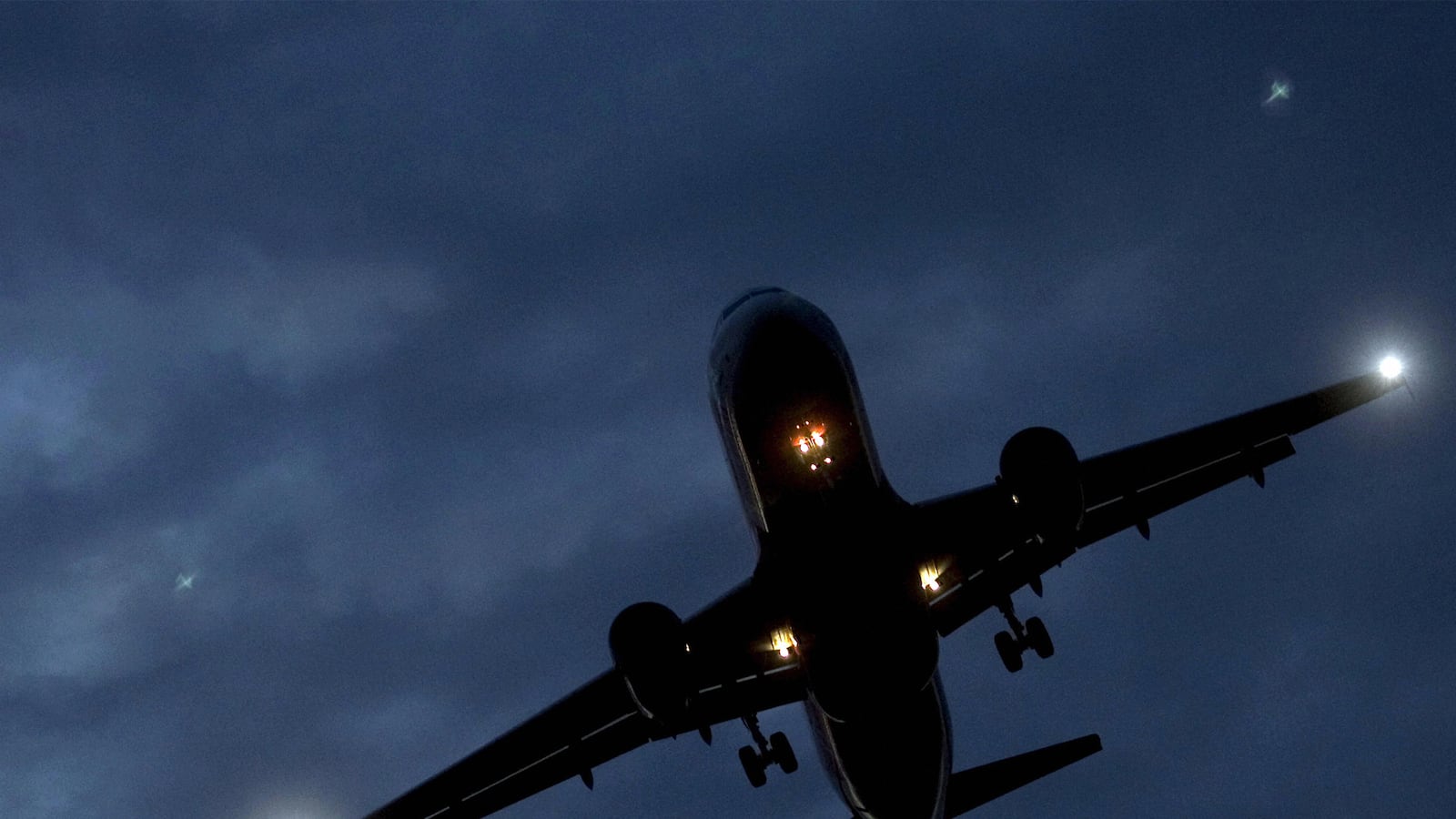As searchers close in on what appears to be the main wreckage of AirAsia Flight 8501 the retrieval of the airplane’s flight data and cockpit voice recorders should soon follow. The wreckage lies no more than around 100 feet down in the Java Sea. Although there are strong currents and poor visibility, compounded by the high seas generated by stormy weather, divers should be able to locate the rear end of the fuselage where the flight data recorder, the black box, is located.
The black box and the cockpit voice recorder will together be able to give a highly detailed second-by-second account of what now seems of primary interest to investigators: how the two pilots responded to a sudden and violent cell of weather within a thunderhead cloud that engulfed them, probably reaching more than 20,000 feet above their cruise height of 34,000 feet.
Investigators will focus on whether the sudden emergency was so extreme that no degree of pilot skill would have helped. Or did the pilots, once more, lack not only the experience of meeting such a challenge, but also whether they, and thousands of other pilots around the world, were ever trained to handle this specific combination of challenges?
I say “once more” because since the loss of Air France Flight 447 on June 1, 2009, a serious deficiency has been exposed in how pilots are trained—and how their acuity is regularly tested—to handle modern jets with state-of-the-art cockpit automation.
Some background is useful here.
One of the most impressive achievements of the 20th century was that an international system of air travel could achieve the extraordinary levels of safety that it did, and that this system was able to consistently meet these levels across all continents and cultures. This was achieved only by a relentless program of technical advances.
Great resources were devoted to the science of air crash investigation. Each accident, whether negligible in its impact or catastrophic, was interrogated for its causes, lessons were learned, and corrective measures developed and applied.
In the jet age, which arrived in the late 1950s, three separate technologies were being pressed to deliver more reliability: jet engines, airplane structures, and navigation. The jet engine instantly brought two advances over propellers: it doubled the speed and it was far more reliable. New refinements in aluminum made structures both stronger and lighter. And increasingly smart navigation aids in the cockpit brought far greater precision and efficiency to route planning.
Paradoxically, by the 1980s, when much more extensive automation was introduced to cockpits, mechanical failures became far less frequent than human failures. In particular, crashes caused by what is euphemistically called controlled flight into terrain, CFIT—in other words, hitting a mountain, for example—persisted as other causes were eliminated. Once technology was applied to this problem in the form of a proximity warning system, such as squawking a loud alarm to pilots, this cause, too, was largely eliminated.
There were also crashes not due to either mechanical or human error but to a lack of warning of dangerous conditions. For example, wind shear, an invisible but potentially lethal form of highly-localized turbulence that could destabilize airplanes on approach to an airport, has also been virtually eliminated as a cause with the introduction of wind shear sensors on the ground that enable air traffic controllers to warn pilots and re-direct them.
By the first decade of this century the most frequent cause of serious accidents had been narrowed down to—and still is—“loss of control.” This might seem a very loose term, but it has emerged in a very specific environment during the course of airline operations all over the world.
Two paths converge: human skills and automation. Cockpits have become “de-manned.” Computers are flying a modern commercial airliner for most of the time, and flying it well, with a finesse that human reflexes cannot match.
It’s also important to realize that the present and future generations of airliners cannot be flown any other way. Their whole performance—their aerodynamic efficiency, their greatly improved fuel consumption, their in-flight stability, their handling characteristics on takeoff and landing—have been baked into them only because so many of the functions directed from the cockpit are performed by computers.
Inevitably, the old visceral “hands-on” flying skills, no longer much employed by pilots, have atrophied like an unused limb. But this physical involvement, or lack of it, is only part of the problem. In the classic skillset of piloting, mental acuity, and its coordination with hand and foot movements, is equally vital.
In “loss of control” situations, the phrase “situational awareness” often comes up, and, if anything, it seriously understates the challenge involved. One specific kind of emergency is at the heart of this, such as when an airplane suffers a loss of stability at night. There’s no visible horizon and the computers may be feeding totally misleading and critical information to the pilots. At such a moment, the pilot has no resources other than his own instincts and experience.
So, what happens if nothing in his training has replicated such a dire condition? What happens is Air France Flight 447. Faced with the sudden shutdown of their Airbus A330’s automated flight management system and left to fly the airplane manually the pilots lost their “situational awareness” and misread the physical behavior of the airplane when there was very little margin for error. In the space of just four-and-a-half minutes, from when the computers shut down (because of a flawed speed gauge) the airplane was lost and with it all 228 people on board.
French investigators found the Air France’s pilot training program had not prepared the crew of the Airbus for the situation they found themselves in over the south Atlantic. Had they been properly trained, they could and should have flown themselves safely out of the emergency. Specifically, the pilots got themselves into a high altitude stall, where the wings lose the capacity to provide lift. They should have pointed the nose of the Airbus down and applied more power. Instead, they pointed the nose upward and as it careened about the sky, the airplane’s aerodynamic stability and balance “bled away.”
By 2011, Airbus was working on a program to replicate these conditions in a flight simulator for use in pilot training. How urgently was this needed? At a conference of aviation safety experts in Istanbul that year, Claude Lelaie, a special advisor to the CEO of Airbus, warned that the current simulator training for stalls did not replicate the actual experience very well.
He admitted that even when Airbus took four experienced training pilots and sent them up on actual test flights to watch their responses to a real stall at cruise altitude “there was some initial reluctance from one pilot, the most experienced, to positively reduce AOA [the wing’s angle of attack, the angle at which it is designed to meet the air] by moving the stick forward before increasing thrust. … When out of the stall, we discovered a tendency of the aircraft to pitch up due to thrust increase, which led to a secondary stall warning.”
And let’s be absolutely clear: this was not just a pilot, not just an extremely experienced pilot, but a pilot who trained other pilots—and his instinctive response had been wrong.
After some animated debate at the conference, Lelaie declared, with some frustration, “If you push on the stick, you will fly.”
Captain Chesley Sullenberger, who in 2009 made the now legendary emergency landing on the Hudson river in an Airbus A320—identical to that in AirAsia Flight 8501—has said, commenting on the AirAsia event, that very few pilots flying either modern narrow body or wide-body jets today have ever experienced a stall in those jets. (They do get stall training in elementary initial flying lessons, but it is nothing like what they’re more likely to experience in today’s modern jets.)
This is almost certainly true of Captain Irianto, the 53-year-old pilot of the AirAsia A320, and his copilot, 46-year-old Remi Emmanuel Piesel. The fact is that five years after the Air France Flight 447 catastrophe, only now are computerized flight simulators used in training pilots being rewritten to replicate loss of control scenarios. This is why it is virtually meaningless to cite the fact that Captain Irianto had 20,000 hours of experience as a pilot and that 6,100 of those hours were on A320s. Unless he had faced in a simulator what he probably faced in that thunderhead over the Java Sea, he would not have been ready for it. Even then, as the Airbus tests showed, old habits die hard.
We don’t yet know if the captain was actually flying the AirAsia jet when the crew requested a change of altitude clearance from the air traffic controllers. Captains don’t normally fly the airplane at cruise. The “pilot flying” was more probably the far less experienced copilot. Whatever happened overtook them both within a minute or so of that altitude change request, and they were never heard from again.






